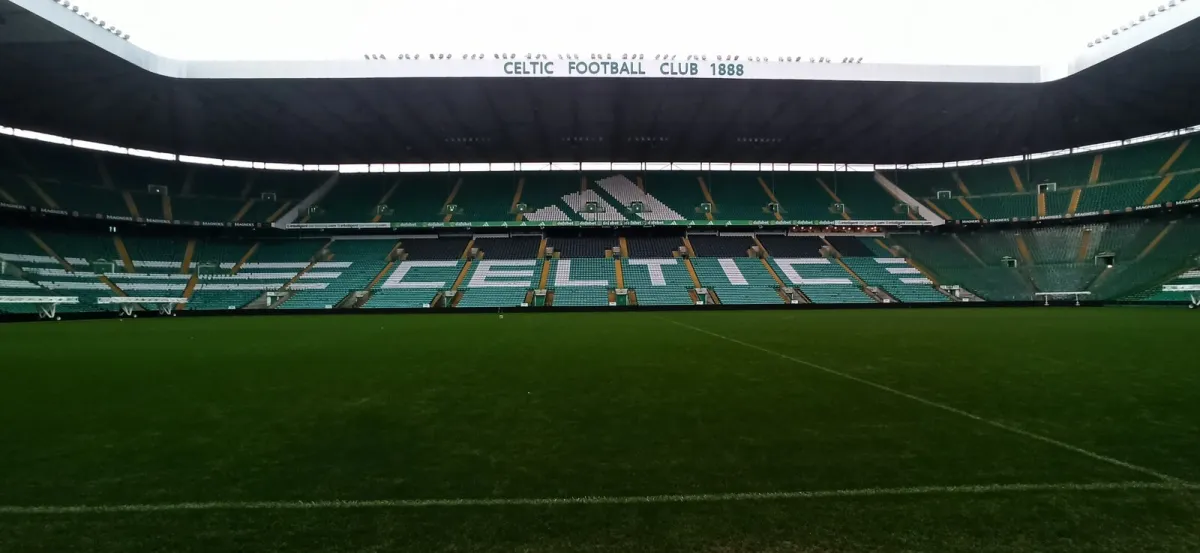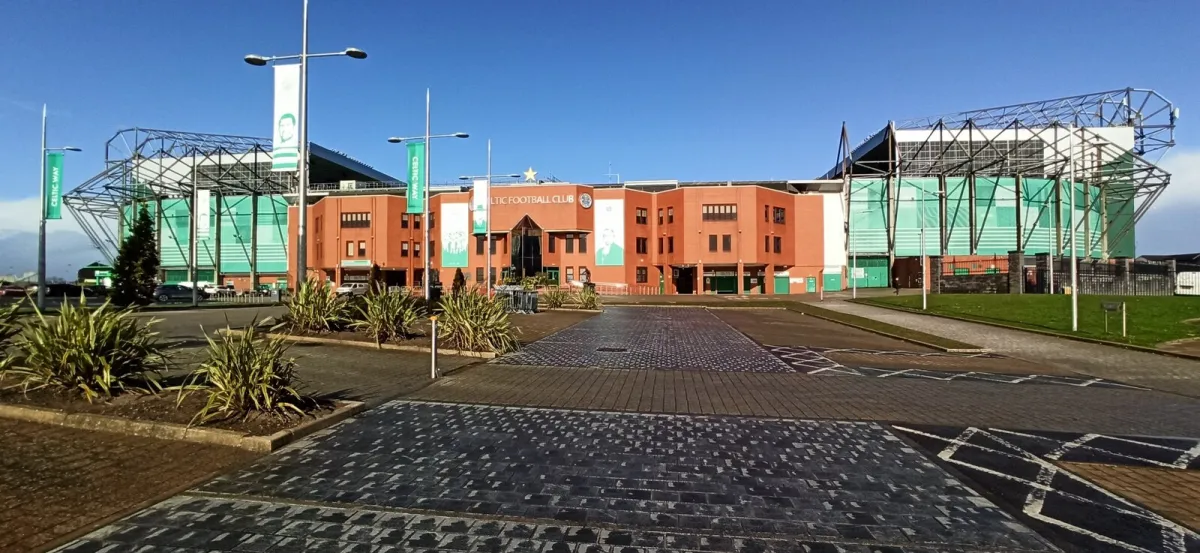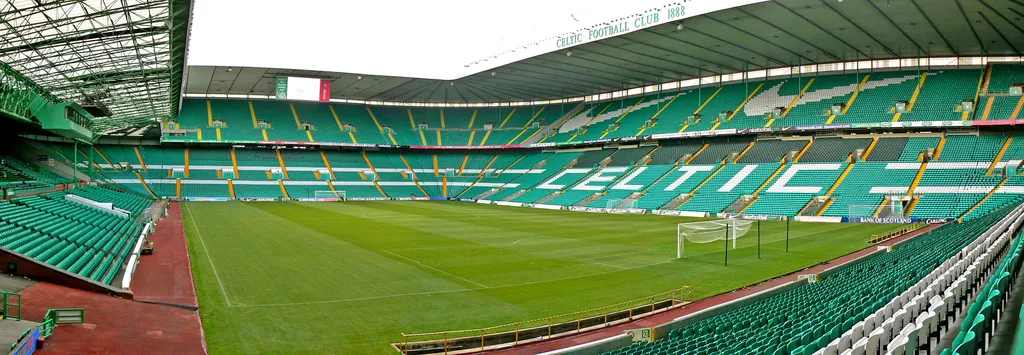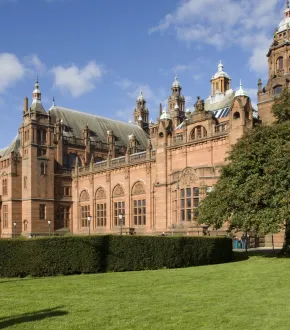7.5 °c Wind speed: 28 km/h Precipitation: 96 % Cloudiness: 81.5 % Humidity: 85 mm Pressure: 96 mb
Celtic Park
Janefield Street 12
Glasgow
G40 3RE
United Kingdom
Description
Celtic Park, famously known as "Parkhead" or "Paradise," is a monumental symbol of Scottish football. Home to Celtic Football Club, this stadium is steeped in rich history, notable architectural features, and a cultural significance beyond sports. This article delves into the storied past, architectural marvels, and the cultural impact of Celtic Park.
Historical Background
The inception of Celtic Park dates back to 1888, when the first stadium was constructed at the northeast junction of Springfield Road and London Road in Parkhead, Glasgow. Celtic Football Club played its inaugural match at this venue against Rangers, winning 5-2. However, due to a significant rent increase by the landlord, the club relocated in 1892 to its current location, just 200 yards away from the original site. This move was driven by necessity but marked the beginning of Celtic Park's enduring legacy.
The new stadium's construction was marked by a ceremonial event where Irish patriot Michael Davitt laid the first sod of turf brought from County Donegal. This act, coupled with the state-of-the-art design of the new stadium, led to it being dubbed "Paradise" by a local journalist.
Architectural Features
Celtic Park's architectural evolution is a testament to its historical and cultural significance. The original design featured terracing with a capacity of approximately 40,000 spectators. It also included a running track and a concrete cycling track around the pitch, a nod to the multi-functional use of stadiums during that era. Notably, in the 1890s, Celtic Park introduced the first press box at a football stadium in Britain, high up on the main stand.
In 1929, a significant redevelopment replaced the unsafe Grant Stand with a new Main Stand designed by Duncan and Kerr. This stand, which cost £35,000, provided seating for 4,800 spectators and featured a distinctive pedimented roof gable over the press box, similar to the one at Ibrox Stadium (Wikipedia). The 1990s brought further modernization, increasing the capacity to over 60,000, making it the largest football stadium in Scotland and one of the largest in the United Kingdom.
Cultural Significance and Visitor Experience
Celtic Park is not merely a venue for football matches; it is a cultural landmark that draws visitors from around the globe. The stadium tours offer a unique glimpse into the club's heritage, allowing fans and tourists to explore the home team dressing room, the Celtic FC Boardroom, and the famous tunnel leading to the pitch.
The atmosphere on match days is unparalleled, with passionate fans creating an electrifying environment. The record attendance for a Celtic match at Celtic Park was set on January 1, 1938, during an Old Firm derby against Rangers, with an estimated crowd of 92,000 (Wikipedia). This emotional support underscores the stadium's significance as a cultural and social hub in Glasgow.
Modern Amenities and Future Developments
Celtic Park today is equipped with modern facilities that enhance the visitor experience. The Number 7 restaurant offers a unique dining experience with pitch views, adding a touch of luxury to match days and stadium tours. The stadium also hosts various events and functions, showcasing its versatility beyond football.
The future looks bright for Celtic Park. The plan is to keep it a top place for sports. They want to make it better in many ways. This includes making things more modern, easier to get to, and fun for visitors. The goal is for Celtic Park is still a great spot for sports fans and tourists.
Detailed Historical Timeline
1888-1892: The Early Days
Celtic Football Club began in November 1887, and the first Celtic Park opened soon after. Celtic beat Rangers 5-2 in their first game there. But in 1892, they had to move to a new place because the rent went up significantly.
1892-1904: Building Paradise
The new Celtic Park was made in an old brickyard. Michael Davitt laid the first grass. It quickly became one of Britain's best stadiums. Large crowds came, and big games were played there. In 1894, 45,107 people saw Scotland play England!
1904-1957: Growth and Rebuilding
A fire in 1904 ruined the old north stand. They had to rebuild a lot. By 1929, the unsafe Grant Stand was replaced with a new Main Stand. This made the stadium safer and bigger. Even with these problems, Celtic Park still held large crowds and important matches.
1957-Present: Making It Modern and Bigger
In the late 1900s and early 2000s, Celtic Park got many updates. In the 1990s, they made room for over 60,000 people. They also added new things to make it better for fans. Now, Celtic Park is a modern, multi-use stadium that still has its old charm.
Celtic Park is a place that shows the changing needs of the team and fans over time. At first, there were wooden stands. But then, they built more long-lasting and bigger stands. In 1929, they rebuilt the Main Stand. It had a modern design but still looked like Celtic. The roof gable became a well-known symbol, mixing the old and new.
In the 1990s, the stadium got a big update. They built the Jock Stein Stand, the North Stand, and the Lisbon Lions Stand. This last one was named after the amazing team that won the European Cup 1967. The new stands made the stadium bigger and better for fans. People could see better, and there were more modern things for them.
They also put in new floodlights and a sound system. This made going to games even more fun! The outside of the stadium is green and white, the Celtic colours. It shows how much history the team has.
But Celtic Park is not just for football. It is an important place for the whole community. People use it for concerts, charity games, and get-togethers. It is a big part of Scottish culture.
Celtic Park draws people from all around the world for its exciting tours. These tours give fans a close-up look at where their sports heroes play and train. Visitors can explore areas like the home team locker room, meeting rooms, and hallways leading to the field. This helps people learn more about the club's rich history and values.
On game days, the air at Celtic Park crackles with energy. The passionate fan group called the "Green Brigade" makes every match a remarkable event. Their chants, songs, and well-planned displays fill the stadium with Celtic pride and spirit, turning each game into a celebration.
Visitor Statistics and Economic Impact
Over a million visitors come to Celtic Park every year, bringing a lot of money into the local economy. When fans pour in for stadium tours or matches; they spend money at nearby hotels, restaurants, and shops. The money visitors spend helps businesses thrive. Beyond just spending, Celtic Park's good reputation attracts more tourists to Glasgow.
The stadium has modern amenities like the Number 7 restaurant and hospitality suites. These welcoming spaces cater to all visitors, from sports fans to corporate guests. The fancy yet traditional setting makes Celtic Park a versatile place for events and gatherings, bringing in even more money.
Future Prospects and Developments
The future looks bright for Celtic Park, with plans for improvements and updates. The club aims to maintain the stadium's leading status while preserving its rich history and culture. Proposed upgrades include advanced digital features, better accessibility, and enhanced spectator facilities for a top-notch experience.
Celtic Park is a huge stadium in a key part of Glasgow. It is very old, but keeps are getting better. Celtic Park is where Celtic Football Club plays its home games. This club is very important in Scotland.
Celtic Park has been around for a long time. It first opened in 1892. Over time, the stadium got bigger and better. Now, it can hold over 60,000 fans. This makes Celtic Park one of the biggest stadiums in Scotland.
One special thing about Celtic Park is its architecture. The main stand looks grand and fancy, with big red brick walls. This is the oldest part of the stadium. Other parts were added over the years, and some are very modern.
Celtic Park means a lot to people. It is more than just a sports ground. For fans, it is a sacred place. Fans love to go there. They feel pride and joy at Celtic Park. The atmosphere is electric on game days.
The club cares about the Earth, too. It tries to make the stadium better for the planet and cut down on pollution. This fits with Celtic's ideals about helping people.








Comments